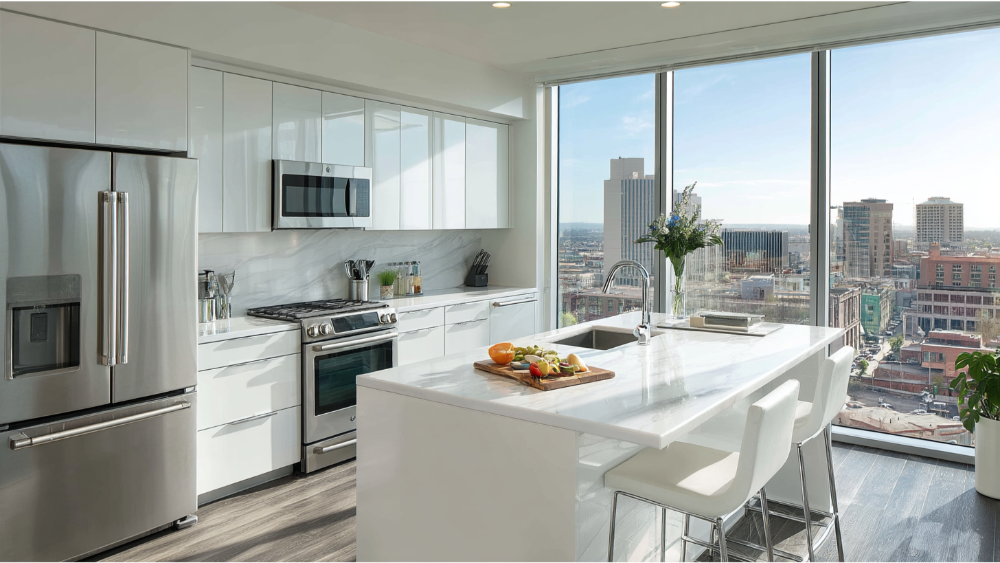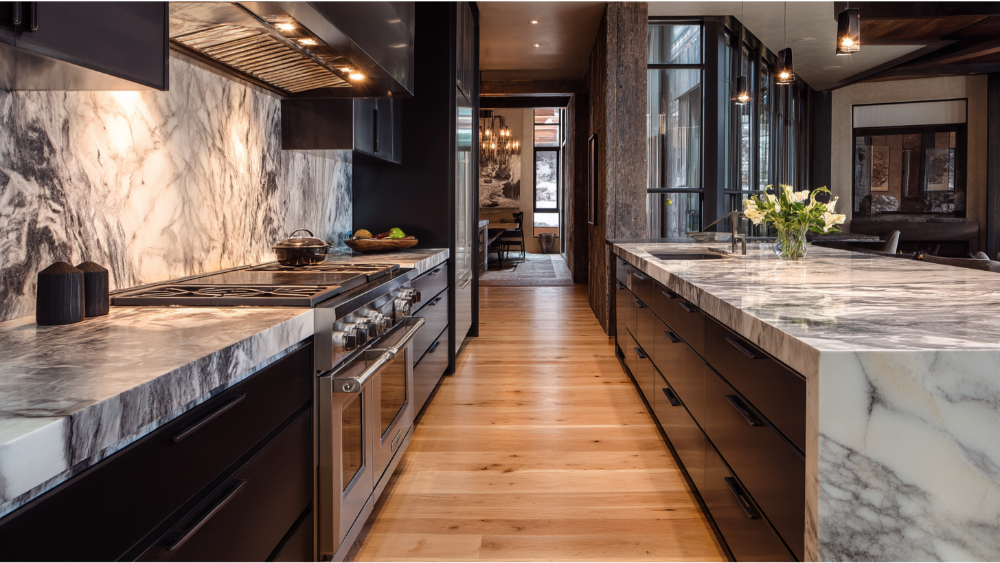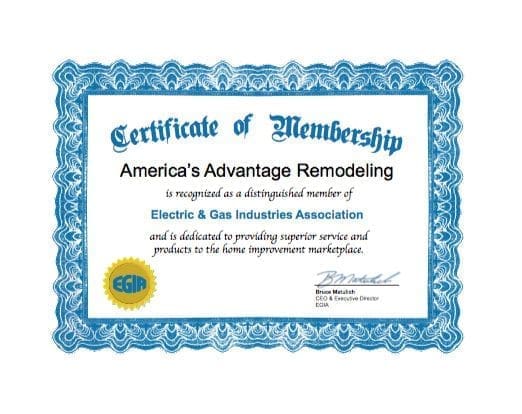
If you’re a homeowner planning a remodel or just trying to cut back on your electricity bills, one question matters more than you think: how much is appliances per month? While most people budget for upfront costs, it’s the monthly operating expenses that slowly eat into your wallet. From electricity, maintenance, and energy consumption to hidden fees from older systems, the true energy costs of home appliances stretch far beyond the purchase price.
At America’s Advantage Remodeling, we help homeowners throughout Sacramento, Roseville, and the surrounding areas make smarter choices about energy, design, and monthly expenses. In this guide, we’ll explore the average monthly cost of appliances, break down energy use per hour, and help you understand how to make your appliances more affordable and energy efficient in 2025.
The Real Cost of Appliances Per Month
When you ask, “how much is appliances per month,” the answer depends on a few key factors: the size of your household, the wattage listed on your appliances, how often you use them, and local utility rates. Energy consumption and electricity costs can vary depending on your location, appliance age, and efficiency.
On average, the monthly electricity cost for appliances ranges between $30 and $60, but this can climb higher for larger appliances, homes with central air conditioning, or units running per hour over long periods. Understanding these energy costs helps homeowners budget better and identify which appliances contribute most to their annual costs.
Appliance Purchase Price vs. Monthly Operating Cost

Common Appliance Prices in 2025
Here’s a breakdown of appliance costs homeowners can expect when buying new kitchen appliances and other home units:
- Refrigerator: $900 to $3,200
- Dishwasher: $450 to $1,250
- Oven and range: $700 to $2,700
- Microwave: $150 to $600
- Washer and dryer set: $1,100 to $2,800
- Portable units: Vary depending on size and type
While these prices are important, you also need to consider how much these appliances will cost per month to operate. Many homeowners pay more for cheap units in the long run due to poor energy efficiency, which increases their annual costs through higher energy consumption.
Monthly Energy Use by Appliance
Below is the estimated monthly electricity usage of major household appliances, based on average use and current 2025 per kilowatt hour (kWh) rates:
| Appliance | kWh/month | Cost Per Month (avg $0.27/kWh in CA) |
|---|---|---|
| Refrigerator | 35–60 | $9.45–$16.20 |
| Electric oven | 25–45 | $6.75–$12.15 |
| Dishwasher | 20–30 | $5.40–$8.10 |
| Electric dryer | 40–60 | $10.80–$16.20 |
| Washing machine | 10–20 | $2.70–$5.40 |
| Microwave | 15–30 | $4.05–$8.10 |
| Lights | 50–90 | $13.50–$24.30 |
| Air conditioner | 150–300 | $40.50–$81.00 |
| Heat pump | 120–250 | $32.40–$67.50 |
| Central air conditioning | 300–500 | $81.00–$135.00 |
| Television | 25–60 | $6.75–$16.20 |
| Waffle iron | 8–15 | $2.16–$4.05 |
| Radio | 10–20 | $2.70–$5.40 |
These figures help answer not only how much is appliances per month, but also how much electricity each one uses. Wattage and usage are crucial, many older models draw more power than necessary, leading to higher energy costs and annual costs.
Energy Consumption: The Hidden Money Drain

Energy Bills from Appliances Add Up
The average U.S. homeowner spends between $350 and $600 per year, or roughly $30 to $50 per month, on appliance-related energy use alone. This does not include hot water, heating, cooling, or lighting.
Old or poorly maintained appliances increase energy consumption, especially if they run inefficiently or lack energy star certification. That’s why replacing old kitchen appliances and other home appliances can be a smart financial decision. You might pay more upfront, but you’ll save money every month in electricity costs.
Understanding Wattage and Kilowatt Hours
Each appliance has a wattage listed that tells you how much power it draws per hour. Multiply that by the number of hours used, divide by 1,000, and you’ll get your kWh. That kWh number, multiplied by your local rate per kilowatt hour, gives you the hourly cost.
Let’s take a refrigerator as an example:
- Wattage: 150 watts
- Daily usage: 24 hours
- Monthly usage: 150 x 24 x 30 ÷ 1000 = 108 kWh
- Monthly electricity cost: 108 kWh x $0.27 = $29.16
Now consider an energy star refrigerator:
- Wattage: 80 watts
- Monthly cost: about $15.55
That’s almost half the cost, showing why energy efficiency pays off.
Factors That Affect Monthly Appliance Costs
Household Size and Usage Habits
An average family of four will naturally use appliances more often than a single resident. More loads of laundry, more food preparation, and longer heating or cooling hours all lead to increased energy bills. Monitor your usage habits to understand which systems are running unnecessarily.
Appliance Age and Efficiency
Old appliances typically have lower energy efficiency and lack smart controls or automatic shutoff features. New home appliances, especially those with energy star labels, are built to reduce energy consumption and increase performance.
Local Electricity Rates
In California, electricity costs are higher than the national average. While national rates hover around $0.16 per kilowatt hour, PG&E and SMUD rates are close to $0.27 per kWh in 2025. That means every hour an appliance runs has a bigger impact on your energy bills here.
Seasonal Systems
Appliances like air conditioners, heat pumps, whole house fans, and portable heaters can drastically increase monthly energy consumption during seasonal spikes. In summer, central air conditioning can cost as much as $135 per month to operate in California.
How to Lower Monthly Appliance Costs

Replace Old Appliances with Energy Star Units
If you’re remodeling or upgrading, consider replacing old kitchen appliances and other home appliances with energy star certified models. These units meet strict energy efficiency guidelines and use 20% to 50% less power, depending on the type and wattage.
Some energy-saving options include:
- Front-loading washers with moisture sensors
- Induction ovens with rapid response
- Energy star refrigerators with inverter compressors
- Dishwashers with soil sensors and low-watt heating elements
Optimize Usage Habits
You don’t need to overhaul your whole kitchen to see savings. Small habit changes make a difference:
- Run full loads in the washer, dryer, and dishwasher
- Air dry dishes instead of using the heat cycle
- Use cold water when possible
- Turn off unused lights and electronics
- Unplug television, radio, or microwave when not in use
- Switch to LED lighting throughout the house
Install Smart Monitors
Installing smart energy monitors helps track power usage per appliance per hour, revealing which units are driving up your bills. You can install outlet-level monitors that track the wattage listed and provide data in real time.
Upgrade Systems That Support Appliances
Beyond just the appliances, other home systems play a role in energy consumption. Consider upgrading or optimizing:
- Insulation to reduce heating and cooling loads
- Whole house fan for passive cooling
- Hot water heater for faster recovery and lower electricity use
- Programmable thermostats for HVAC optimization
When to Repair vs. Replace
Repairs are often short-term fixes. If an appliance is over 10 years old or operates at a high energy consumption rate, consider replacing it. Here’s when to choose each:
Repair:
- Minor malfunction
- Still under warranty
- No effect on energy bills
Replace:
- Unit uses high wattage per hour
- Frequent breakdowns
- Parts are discontinued
- You’re starting a remodel
As part of our remodeling projects, we help homeowners evaluate and select appliances that offer optimal long-term performance and lower electricity demand.
How Much Is Appliances Per Month When Remodeling?

During a home remodel, clients often ask, how much is appliances per month, and how to keep that number low. We recommend the following:
- Bundle appliance installs during your kitchen or laundry remodel
- Use rebates and local utility incentives for energy star appliances
- Plan for your average use based on family size and lifestyle
- Choose appliances that require less power per hour
We handle all of this as part of our design-build process, from appliance sourcing and placement to installation and energy planning.
Frequently Asked How Much Is Appliances Per Month Questions
What are the most expensive appliances to operate?
Central air conditioning, electric dryers, and old refrigerators use the most energy per hour, often contributing over $20–$100 per month depending on usage and wattage.
How do I calculate how much electricity an appliance uses?
Multiply the wattage listed by hours used, divide by 1,000 to get kWh, then multiply by your local per kilowatt hour rate.
Can energy star appliances really save money?
Yes. Energy star units are designed to reduce energy consumption, often cutting electricity costs by 20% to 50%.
Should I unplug appliances when not in use?
Unplugging or using smart strips prevents vampire power, especially for television, microwave, or radio, which continue drawing electricity per hour even when turned off.
Is it worth switching to a heat pump?
Yes. A modern heat pump is more energy efficient than a traditional heater or air conditioner, reducing energy use in both summer and winter.
Final Thoughts
Understanding how much is appliances per month gives you more control over your remodel and your monthly bills. From calculating kilowatt hour usage to planning around energy consumption, a little knowledge goes a long way.
At America’s Advantage Remodeling, we help homeowners make smart, energy-conscious choices when renovating their homes. Whether you’re upgrading your kitchen appliances, planning to add a heat pump, or need guidance on reducing electricity usage, our team is here to help.
Let’s design a home that looks great, runs efficiently, and saves you money every single month. Schedule a free consultation with our team today.
CONTACT US
Our Services
Areas We Serve
Certificate






